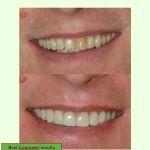- 1-Understanding-Natural-Teeth-Whitening
- 2-Popular-Natural-Methods-for-Teeth-Whitening
- 3-Scientific-Evidence-Behind-Natural-Whitening-Remedies
- 4-Potential-Risks-and-Precautions
- 5-Real-Stories-of-Natural-Whitening-Success
- 6-Professional-Guidance-and-When-to-See-a-Dentist
Understanding Natural Teeth Whitening
Many people ask, “can you whiten your teeth with natural methods?” The answer is yes, but with important caveats. Natural teeth whitening involves using household ingredients or lifestyle adjustments that may reduce surface stains and brighten your smile gradually. These methods tend to be safer than harsh chemical treatments but often require consistent effort over time.
Natural whitening is appealing to those looking for affordable, accessible, and minimally invasive options. However, it is essential to understand what these methods can realistically achieve and how they work to avoid disappointment or damage.
Popular Natural Methods for Teeth Whitening
Common natural remedies include baking soda brushing, oil pulling with coconut oil, and using activated charcoal. Baking soda gently scrubs away surface stains due to its mild abrasive properties. Oil pulling involves swishing oil in the mouth to reduce bacteria and plaque, which can cause discoloration.
Other natural approaches include rubbing the inside of a banana peel on teeth or consuming crunchy fruits and vegetables like apples and carrots that naturally clean teeth. Drinking plenty of water and reducing stain-causing foods and drinks also supports whiter teeth.
Scientific Evidence Behind Natural Whitening Remedies
Research indicates that some natural methods can modestly improve tooth brightness. For example, baking soda’s mild abrasiveness has been clinically shown to reduce stains. However, remedies like banana peels or oil pulling lack strong scientific validation for significant whitening effects.
Experts emphasize that natural methods primarily target surface stains and do not change the natural color of teeth beneath the enamel. For deeper discoloration, professional whitening may be necessary.
Potential Risks and Precautions
While natural methods are generally safer than chemical whitening, overuse or incorrect application can damage enamel or irritate gums. Excessive brushing with abrasive substances like baking soda can wear down enamel, increasing sensitivity.
It is vital to use natural remedies in moderation and consult with dental professionals before starting any whitening routine, especially if you have dental restorations, sensitive teeth, or gum issues.
Real Stories of Natural Whitening Success
Jessica, a college student, shared how incorporating baking soda brushing twice a week alongside regular dental hygiene brightened her smile noticeably within months. Meanwhile, Mark combined oil pulling with reducing coffee intake to lessen staining and felt more confident in his appearance.
These stories demonstrate that while natural methods may not yield instant results, dedication and good habits contribute significantly to oral aesthetics.
Professional Guidance and When to See a Dentist
Natural whitening methods can be a part of your dental care routine, but professional advice ensures safety and effectiveness. Dentists can provide personalized recommendations, assess for underlying causes of discoloration, and offer treatments that complement your natural efforts.
For tailored guidance and reliable products, visit Dentistry Toothtruth, where experts support your journey to a brighter, healthier smile.







 Springfield Dentures and Implants4.0 (69 review)
Springfield Dentures and Implants4.0 (69 review) A Z Dental3.0 (41 review)
A Z Dental3.0 (41 review) Forest Ridge Family Dentistry5.0 (175 review)
Forest Ridge Family Dentistry5.0 (175 review) Motto Clear Aligners0.0 (0 review)
Motto Clear Aligners0.0 (0 review) Beck Dental Center4.0 (34 review)
Beck Dental Center4.0 (34 review) Celebrate Dental & Braces4.0 (724 review)
Celebrate Dental & Braces4.0 (724 review) The Importance of Oral Health Education During Pregnancy for a Healthy Pregnancy
The Importance of Oral Health Education During Pregnancy for a Healthy Pregnancy Best Tips for Brushing Your Teeth Properly for Healthy Gums: Essential Techniques for Oral Health
Best Tips for Brushing Your Teeth Properly for Healthy Gums: Essential Techniques for Oral Health Why Skipping Dental Checkups Can Lead to Bigger Oral Health Problems
Why Skipping Dental Checkups Can Lead to Bigger Oral Health Problems Advantages of Porcelain Dental Restorations
Advantages of Porcelain Dental Restorations How Can Diabetes Cause Tooth and Gum Problems? Preventing and Managing Oral Health Issues
How Can Diabetes Cause Tooth and Gum Problems? Preventing and Managing Oral Health Issues Healthy Habits for Promoting Good Oral Health and Hygiene: Tips for a Healthy Smile
Healthy Habits for Promoting Good Oral Health and Hygiene: Tips for a Healthy Smile